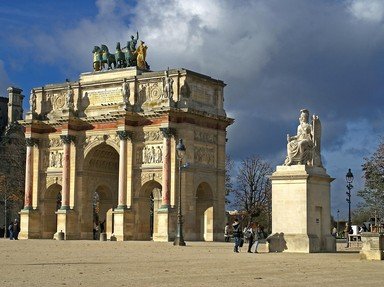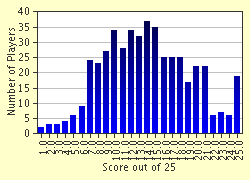Quiz Answer Key and Fun Facts
1. Two days before the Battle of Waterloo on 16th June 1815, Napoleon and his army of 68,000 had already defeated an army of 84,000 Prussians. Where did that battle take place?
2. The evening before Waterloo, Napoleon had spent at Genappe at the Caillou farm. All night it had been raining.As a consequence of that bad weather the terrain was soaked and troop movements were slow (2 kms an hour on average).There were other factors that had slowed down progress.Which of these played NO role?
3. The Battle took place on a Sunday. Napoleon had been relatively slow to start it. How long did it last?
4. What kind of troops were available to Napoleon for his 'Belgian Campaign' after his return from Elba and during his 'One Hundred Days' 'come back'?
5. What was the terrain like ?
6. Napoleon had been in the habit of 'favouring' his closest family with titles and top jobs in his Empire. His elder brother Joseph had been given the Kingdom of Spain. His wife's son from a previous marriage, Eugene de Beauharnais, ruled part of Italy. His brother-in-law Joachim Murat was King of Naples. Etc.- Who was the only one of his brothers that was also present at Waterloo?
7. Though the Battle has been called the Battle of Waterloo, the larger part of the Battlefield is not on the territory of the commune of Waterloo, but in places such as Braine-l'Alleud, Lasne, Plancenoit. The reason it got the 'wrong' name is that Wellington's headquarters was within the boundaries of Waterloo :the Mont St Jean farm at the north end of the battlefield. - Napoleon's headquarters was at the south end ,at the Caillou farm at Genappe.- Various other farms near the Charleroi- Brussels road played a role as well.- Near which of these is it that Wellington and Blucher are supposed to have shaken hands at the end of the day?
8. Infantry troops at the Battle of Waterloo operated in square formations called 'carres'. Those 'carres' offered protection to, among others, the standard bearers and their flags. Who were excluded from sheltering in such carres?
9. There were various types of French cavalry involved in the battle. Which of these could be called the heavy (armoured) cavalry ?
10. What was the numeric strength of Napoleon's troops in comparison with the forces that opposed him ?
11. The troops of the Duke of Wellington were not composed of English soldiers only. There were some Germans :the Hanoverians (House of Hanover was ruling England.) There also was the Prince of Orange with his Dutch batallions.(Wellington did not think highly of the Dutch Prince.'He has got courage,but that's about all', was his polite commentary after realising the Prince's impulsive decisions might have led to defeat.) In Napoleon's army there were quite a few Polish cavalries. The third army involved in the Battle consisted of Prussians only. Their leader was a 72-year- old 'veteran' General Blucher who had a remarkable nickname. Which one?
12. When Blucher's army turned up at Waterloo, the French troops at first believed it was some of their own regiments who were joining in, namely the troops who had been given the orders to pursue Blucher and push him back to Germany. Who was their general?
13. Some of Napoleon's generals were executed after Waterloo. The reason was 'treason' to the new King Louis XVIII who had been installed by the Congress of Vienna. Louis XVIII was related to the last Bourbon King Louis XVI who had been guillotined in January 1793. What was his exact relation to that unfortunate King ?
14. All through the battle Napoleon was accompanied by a local farmer who in the early morning had been lifted out of his bed and had been summoned to serve as Napoleon's guide. Most cartoons about the battle represent him still in his nightcap. His name happens to coincide with that of the famous author of 'The Legend of Ulenspieghel'. What name is that ?
15. Various regiments earned themselves a reputation at Waterloo. Among them the Coldstream Guards. What is the origin of their name?
16. Small details may play a big role in warfare. It was said that Napoleon's armies had the best boots anywhere to be found. But as to weaponry Wellington's soldiers had a remarkable advantage over the rifles used by the French.The calibre of the English flintlock muskets was 18 mm, that of the French rifles 17,7 mm. The English could use French munition , but the French could not use the English bullets. - What was the name of those English flintlock muskets?
17. The Battle of Waterloo is still enacted annually by amateurs of historic scenes. Especially some French regiments have been romanticised. The most spectacular is probably the 'Old Guard' who is said to have replied to the English summons to surrender: 'The Old Guard dies , but does not surrender'. What nickname had they obtained from their commander Napoleon himself ?
18. The Battle of Waterloo was fought on land that is now part of Belgium. On whose side did the "Belgians" (the inhabitants of what now is Belgium) fight?
19. Symbols mattered a lot in those times. Napoleon anyway attached a lot of importance to them. After his escape from Elba one of the first things he did was to give back to the French army some typical Napoleonic symbols. What was the symbolic decoration added to the flagstaff of the standards in the French Army?
20. During the Battle of Waterloo (1815) there of course were a lot of casualties. Surgeons and their assistants were only allowed in when the Battle was over. What was their most frequent job on the battlefield?
21. When the French troops saw that the reinforcements announced by Napoleon were not Grouchy's army but Blucher's , they felt betrayed. Except for the Imperial Guard,they started to flee from the battlefield.Ultimately Napoleon too fled in a coach , got surrounded but managed to escape on horseback. On July 3d he tried to take ship at Rochefort, hoping to reach a safe shelter. Which country did he have in mind?
22. How old was Napoleon when he died at St. Helena ?
23. Various monuments were erected in the years after the Battle. In 1817 the Gordon Monument for an aide-de-camp of Wellington's. - Monument for the Hanoverians in 1818. - Monument for the Prussians in 1819. -The most spectacular monument however is certainly the so-called 'Lion's Hill'. What does it commemorate ?
24. In what direction is the Lion looking?
25. Various authors dealt with the subject of the Battle of Waterloo. Among them: Stendahl in "the Charterhouse of Parma" ; Thackeray in 'Vanity Fair' {;} Byron who wrote a poem that begins with a description of the Ball given by the Duchess of Richmond {;Victor} Hugo in his famous poem:Waterloo, Waterloo, morne plaine. - Which of them got a monument here?
Source: Author
flem-ish
This quiz was reviewed by FunTrivia editor
bloomsby before going online.
Any errors found in FunTrivia content are routinely corrected through our feedback system.

